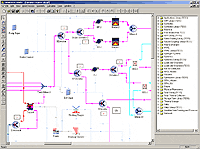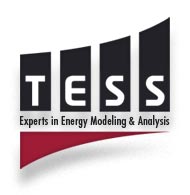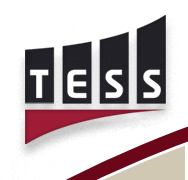3 NORTH PINCKNEY STREET - SUITE 202
MADISON, WI 53703
INFO@TESS-INC.COM
Modeling & Simulation
Utilizing a full suite of powerful modeling tools, we’re able to accurately predict the energy flows, power requirements, temperature, humidity, and thermal comfort of buildings/systems and their energy-consuming components. This has been a core focus of our group since its inception and continues to be the driving force for many of our current projects. The majority of our exercises can be subdivided into the following categories:
- Modeling of Complex Energy Systems
- Development of New Algorithms for Energy Analysis
- Model Validation/Calibration
- New Technology Assessments
- Modeling of Building Energy Performance
Rarely do we evaluate the impact of an energy savings measure without considering the impact on the balance of the system. With simulation tools that allows for the system interactions to be accurately modeled, we have argued for years that modeling building energy systems without considering all of the relevant impacts is short-sighted. For example, a building owner that is considering advanced daylighting controls may calculate the energy saved in avoided lighting costs and deem the project worthwhile. However, if this building is in a heating-dominated climate, the lower internal loads on the building will likely result in an increase in heating load and an increase in the HVAC energy consumption for the building. What originally seemed like a solid investment may now not meet the savings criteria. In many cases, performance does not necessarily have to be defined only in terms of energy consumption – other factors such as comfort, feasibility, economics, and maintenance may also be considered.
Modeling of Complex Energy Systems

Relying heavily on a flexible, yet-powerful, modeling tool called TRNSYS, we’re able to simulated complicated energy systems by configuring the simulation model in a manner similar to the way the real system was connected. Connecting together system components (pumps, chillers, cooling towers, solar collectors etc.) in the real application via pipes and wires is replicated in the simulation by connecting together component models for the equipment via links of information flow. In this manner, complicated system designs can quickly and effectively be modeled. Unlike most common simulation tools, there are no pre-conceived “templates” that this design has to fall under in order to be simulated, allowing us to analyze complex systems that other firms and simulation engines can only estimate.
Refer to our Projects & Clients section for a small subset of the projects we’ve evaluated for our clients.
Development of New Algorithms for Energy Analysis
In many projects we find that the application features a new technology, a twist on a current technology, or a set of control strategies that are not handled in current simulation tools. With its modular structure, the simulation tool that we utilize allows us to quickly add content to the package and thereby expand the capabilities of the program. Over the course of our project work, and our research and development activities, we’ve written over 500 new component models for the TRNSYS package. A few of these models have now been incorporated into the standard package and are being distributed with each purchase of the program. Many of the remaining models were incorporated into the “TESS Libraries”; a collection of thirteen component libraries for TRNSYS that are being sold internationally as add-ons to the TRNSYS package.
Several of our models are currently being used in International Energy Agency (IEA) tasks. Task 34/43 has identified our new slab-on-grade model as a “reference standard” in order to compare simplified ground coupling methods to detailed models. IEA Task 35 is using our PV/thermal models (glazed and un-glazed, air and water based) to evaluate the potential for these type of systems in various climates and applications.
Model Validation/Calibration
At TESS, we have experience in all phases of model validation and calibration. We have validated many of our individual component models against measured data sets including component models for PV, integral collector-storage systems (ICS), thermal storage tanks, ground heat exchangers, and cooling towers to name just a few. We have also participated in several “validation by comparison” studies that attempt to show that a model behaves similarly to other models and also several “analytical verifications” where our models are compared to analytical solutions to verify that the model is behaving as expected.
We have also calibrated many of our detailed system models against measured data sets including the electrical energy consumption of 200 apartments on one electrical feeder at Fort Polk, Louisiana. In this project the “tuned” pre-retrofit data was used to generate a more accurate estimate of the post-retrofit energy consumption. Other large-scale calibration exercises included developing detailed system models of several schools equipped with geothermal heat pump systems.
New Technology Assessments& Feasibility Studies
As we employ one of the few simulation tools that can quickly incorporate add-on component models, we’re often approached about modeling a technology that is new to the market or is currently being researched and is being considered for possible development. In these cases we’ll often develop a first-principles model of the device/process, relying on measured data to calibrate and or validate the model whenever possible. The new models are then incorporated into our simulation analysis package and the balance of the system is configured according to the desired arrangement.

Modeling of Building Energy Performance
Many of our projects involve modeling the energy performance of buildings. Over the past several years this has included single-family homes, multi-family residences, military housing units, commercial buildings, federal facilities, and schools. The goals of each project are different, but most of our projects involve the evaluation of a new or advanced technology, typically comparing the results on a performance and cost basis to standard technologies or baseline systems. These technologies may be system-based (advanced HVAC options, air-distribution systems, etc.) or envelope-based (PCM walls, shading features, etc.).


